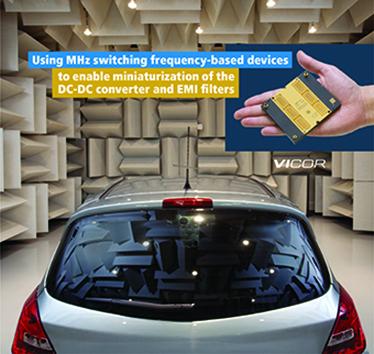
MHz switching frequency-based devices enable miniaturization of the DC-DC converter and EMI filters
Achieving EMI conducted emission compliance for automobiles with a single stage filter. By Nicola Rosano, Sr. Strategic FA/System Engineer at Vicor
More details...
A full brick package developed by TDK-Lambda, the PF1500B-360, is for high voltage distributed power architectures
More details...
The company says with PSOC 4, developers now have endless possibilities to develop new HMI and sensing solutions. From sleek metallic product designs with touch on metal buttons, to waterproof touch buttons, and innovative ways of sensing liquids, PSOC 4 Multi-Sense unlocks new possibilities of sensing.
Infineon says its PSOC 4000T is the first device to feature the company’s fifth-generation CAPSENSE and Multi-Sense. The supported sensing technologies can be combined in a single PSOC 4 MCU to optimise performance (e.g., combination of capacitive and inductive sensing), enable new use cases (e.g., underwater inductive sensing buttons) or realise cost savings (e.g., system control plus liquid sensing). In addition, Infineon’s fifth generation CAPSENSE with “Always On” technology enables sensing at 10x lower power consumption and offers a 10x higher signal-to-noise ratio than previous devices.
“Multi-Sense capability is more than a technology advancement – it’s a paradigm shift and proof that Infineon is committed to supporting customer demands for next-generation devices that support new HMI and sensing use cases,” said Vibheesh Bharathan, Director and Project Lead for PSOC 4 Multi-Sense, Infineon.
“As a leader in sense and control for consumer and industrial markets, we continue to bring new features to enable customer designs of tomorrow’s digitalization solutions for home, office and industrial applications.”
Infineon’s new Multi-Sense capabilities in the PSOC 4 family include:
View PDF
| Privacy Policy | Site Map | © Copyright DFA Media
| Web design by Immersive Media


